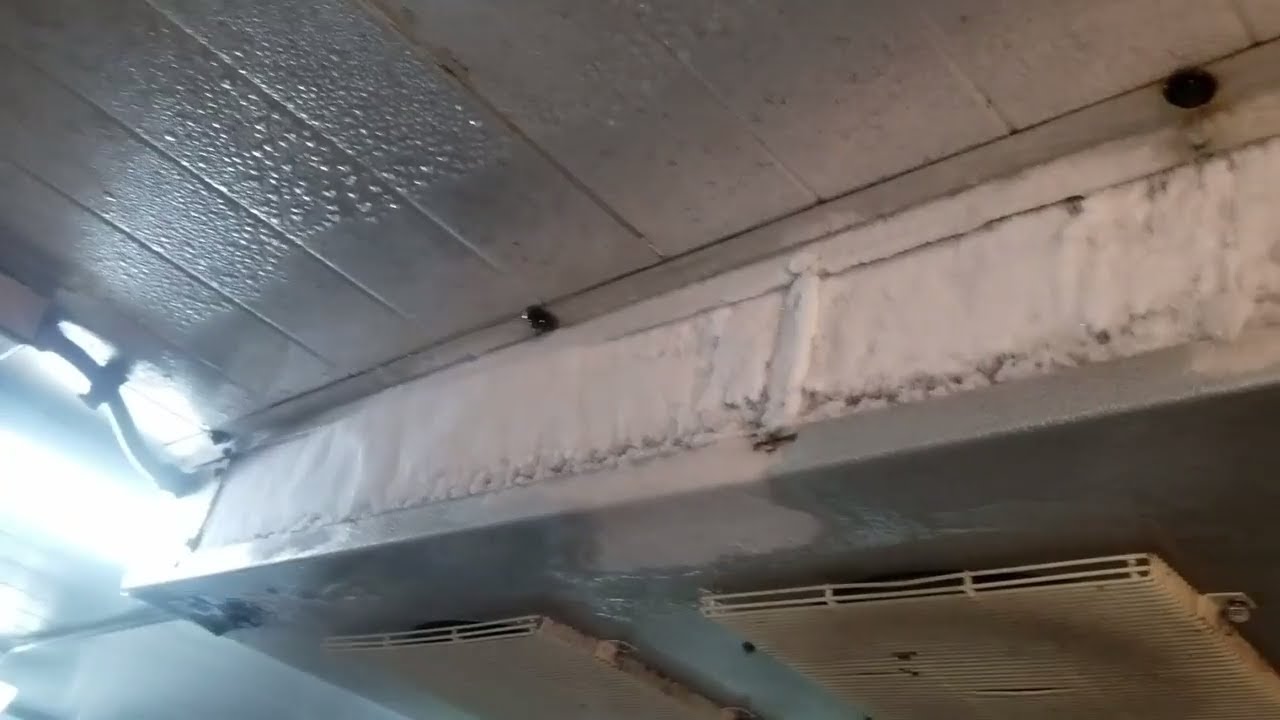Ice buildup on the suction line of a walk-in freezer may be caused by a few factors, such as a lack of proper insulation, a faulty defrost system, or low refrigerant levels. This issue can lead to reduced cooling efficiency and potential damage to the freezer’s components.
It is important to address the root cause of the ice buildup to prevent further damage and ensure the freezer’s optimal performance. When a walk-in freezer experiences ice buildup on the suction line, it can significantly impact its functionality and efficiency.
Understanding the potential causes and taking proactive measures to resolve the issue is crucial in maintaining a well-functioning commercial freezer. We will explore common reasons for ice buildup on the suction line and provide practical solutions to effectively address the problem. By identifying and addressing the root cause of the issue, businesses can ensure the longevity and performance of their walk-in freezers.
Understanding The Issue: Ice Build Up On Suction Line
Ice build up on the suction line of a walk-in freezer is a common problem that can negatively impact the efficiency of the unit. It is important to maintain a frost-free suction line to ensure proper functioning of the freezer.
Several factors can contribute to ice build up on the suction line. One of the main reasons is temperature fluctuations. When the temperature inside the freezer fluctuates, it can lead to the formation of ice on the suction line.
Insufficient air circulation is another factor that can contribute to ice build up. If the airflow in the freezer is restricted, it can cause the moisture in the air to condense and freeze on the suction line.
Refrigerant leaks or overcharge can also result in ice formation on the suction line. If there is a leak in the refrigerant system, it can cause the refrigerant to evaporate too quickly, leading to the formation of ice. Similarly, an overcharged system can cause the refrigerant to accumulate and freeze on the suction line.
Issues with the defrost cycle can also contribute to ice build up. If the defrost cycle is not functioning properly, it can lead to excessive ice formation on the suction line.

Credit: arcticwalkins.com
Troubleshooting Steps For Ice Build Up On Suction Line
Step 1: Checking the thermostat settings
Ensuring proper temperature settings
Adjusting thermostat if necessary
Step 2: Inspecting the evaporator fan
Confirming proper functioning of the fan
Cleaning the fan blades and ensuring unrestricted airflow
Step 3: Verifying the condenser coil condition
Cleaning the coil to remove dirt and debris
Checking for bent or damaged fins
Step 4: Evaluating the defrost cycle
Checking defrost timer operation
Inspecting defrost heater for proper functioning
Step 5: Assessing refrigerant levels and potential leaks
Checking pressure readings
Conducting a leak test if necessary
Solutions For Preventing Ice Build Up On Suction Line
Solutions for Preventing Ice Build Up on Suction Line
Inspecting and upgrading insulation, along with sealing air leaks around the walk-in freezer, can help prevent ice build-up on the suction line. Regularly cleaning evaporator coils and conducting routine system checks are essential for proper maintenance and prevention of ice formation. Checking and adjusting air vents and dampers, as well as optimizing fan operation and positioning, are crucial for ensuring proper airflow. These three solutions can effectively mitigate ice build-up on the suction line, maintaining the efficiency and optimal functioning of the walk-in freezer.
Conclusion
An ice build-up on the suction line of a walk-in freezer can cause significant problems for the system’s performance and efficiency. By understanding the root causes of this issue, such as low refrigerant levels, cold air leaks, or improper defrosting procedures, businesses can take proactive measures to prevent and address ice accumulation.
Regular maintenance, monitoring, and addressing underlying issues promptly are crucial to ensure the smooth operation of the walk-in freezer and prevent potential damages.
